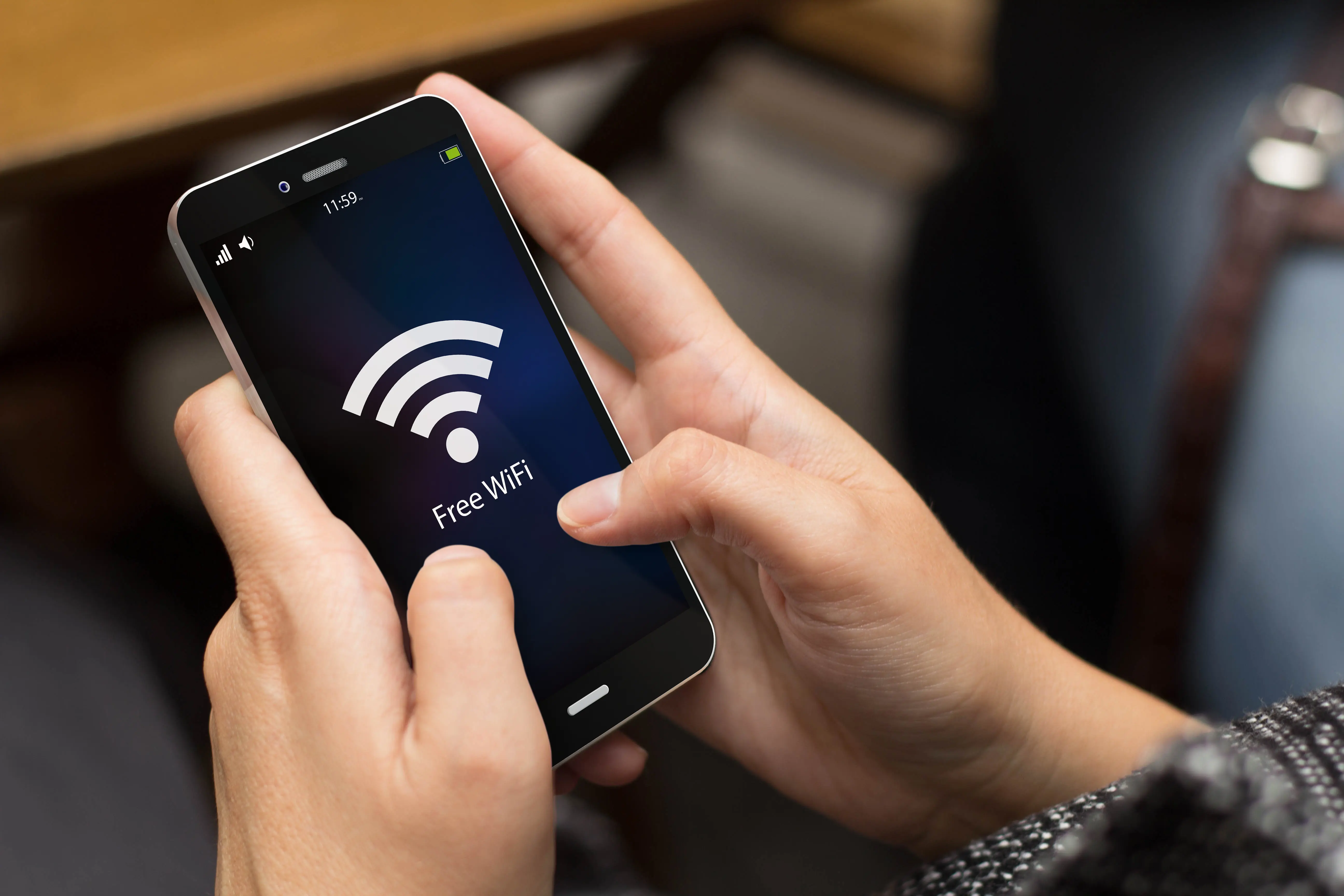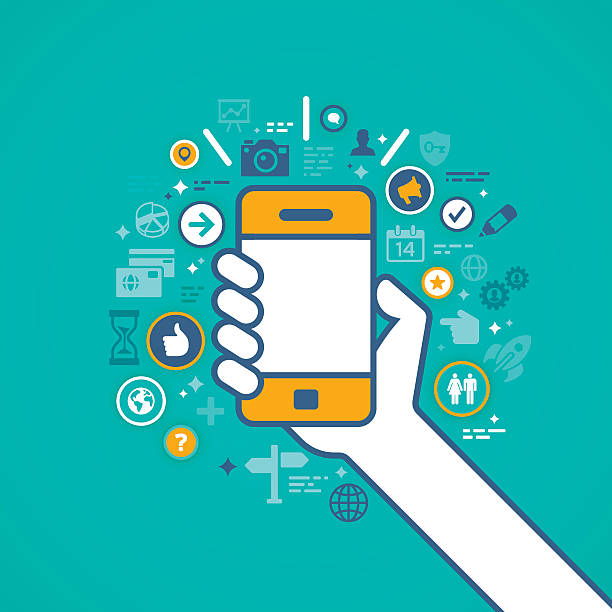Mobile data is a vital part of life for most people. After all, it’s what lets you use the internet, stream your favorite shows or movies, and use apps on your phone without having to connect to Wi-Fi.
But, what is it exactly and how does it work? In this piece we’ll explore what mobile data is, how it works, the different forms it takes, and how to manage your data usage.

What is Mobile Data?
The term “mobile data” is a bit of a misnomer: Mobile data isn’t just the data that’s stored by using your mobile device; it refers to the internet connection provided by your cellular network in order to use services like email, browsing, social media, and streaming on your mobile device. This data is sent and received through cellular towers. It is the equivalent of using Wi-Fi when you are not within reach of a Wi-Fi network.
How Does Mobile Data Work?
When you’re using mobile data, your phone talks to the closest cell tower, which then connects you to the internet. Any data you send or receive while on the internet goes through a series of cell towers, routers, and servers before it gets to your final destination, whether that be a website, an app, or a service.
Mobile data does not require a router and a set network like Wi-Fi does. Mobile data is wireless internet sent through the airwaves. When you use your phone to connect to the internet, your device is free to move around because it does not have to be physically linked to anything. Instead, your device connects to the internet using a cellular network, like 4G LTE or 5G.
Types of Mobile Data Networks
Mobile data travels on various types of networks, each at different speeds and coverage range. The most common are:
Network Type | Speed | Usage |
3G | Basic speeds | Suitable for texting, calling, and light browsing. |
4G/LTE | High speeds | Ideal for streaming, video calls, online gaming, and fast browsing. |
5G | Ultra-fast speeds | Perfect for high-demand tasks like 4K streaming, real-time gaming, and downloads. |
Mobile Data Speed and Coverage
Mobile data speeds and coverage vary. They depend on a number of factors. The type of network, your location, and network traffic are just a few. Learn more about the factors that impact your mobile data below.
Location: Data speeds may be slower in rural or isolated locations where there are fewer cell towers. In an urban or other congested area, 4G or 5G networks provide faster speeds.
Network Congestion: When numerous users are connected to the same network at once, like during rush hours, their activity can slow down your connection. This is why you may have slower data speeds in crowded places and at certain busy times.
Carrier and Coverage Area: Various mobile carriers have different coverage areas; in some areas one carrier may offer faster speeds, in other areas, another carrier may have better nationwide consistency.
For the fastest data speeds, be in an area with solid coverage and use a phone that’s capable of the highest network type available (e.g., 5G).
Mobile Data and Wi-Fi
You can access the internet on your phone using either your mobile data or WiFi, but what's the difference?
Mobile Data: Mobile data is what allows your phone to connect to the internet when you’re not on Wi-Fi. It’s great for when you’re on the move, however, it can use up your data depending on what you’re doing and your data plan.
Wi-Fi: Wi-Fi is generally faster and more reliable than mobile data - e.g. for streaming, downloading large files. It also doesn't use up your mobile data allowance (if you even have one), so it's a cheaper option if you have access to it.
If both options are available, your phone will often automatically switch to Wi-Fi to save on data. However, you can also manually disable Wi-Fi and only use mobile data when you want to.
The main distinction here is the matter of cost vs. convenience: while mobile data is more convenient, Wi-Fi is usually faster and free.

Mobile Data Plan Type
Before choosing a mobile data plan, it’s important to know what your options are. Some of the most prevalent include:
Prepaid Plans: This is where you pay upfront for a certain amount of data, and once you've used up your data allotment, you're finished until your next top-up. These are versatile and lacking in long-term commitments.
Postpaid Plans: With postpaid plans, you pay for how much data you used at the end of the billing cycle. Postpaid plans generally have more data and other extra benefits, but tend to be more costly.
Family Plans: multiple users, shared data. Generally more cost-effective than separate plans per user and ideal for family plans.
Data Sharing Plans: With these plans, you can share a set amount of data between a few different devices. Perfect for those that use a tablet, laptop, smartwatch, and other gadgets.
Unlimited Plans: These plans offer unlimited data, but may be subject to various limitations, like a high-speed data cap or network throttling after a certain usage threshold.
The Use of Mobile Data
How Much Data Do I Need?
How much data you need is in direct proportion to the way you use your smartphone. Use this at-a-glance guide to find out which data plan is best for you.
Light users : Texting, checking emails, and browsing occasionally ( 1-2GB a month).
Moderate users who use social media, stream video on occasion, or listen to music (4-6GB/month).
Heavy users: If you stream 4K video, or have a house full of gamers/work from home (10GB /month).
Most mobile plans have a variety of data packages available, so you should probably keep track of your usage so you don't go over your limit.
Understanding the Mobile Data Usage of Your Phone
Knowing how much data your phone is using throughout the month can help you make sure that you don’t go over your data plan. Many smartphones have built-in settings to help you monitor it. Here’s how to check:
On Android devices, navigate to Settings > Network & Internet > Mobile Network to find your data usage for the current billing cycle.
On iPhone: Tap Settings > Cellular and scroll to the bottom to view information about how much data you’ve used in a particular period. You can manually reset this on your bill dates for a more precise reading.
Both Android and iPhone let you set data limits or reminders - so you will get a notification if you're nearing your limit.
Mobile Data Usage of Different Apps
Different apps will use different amounts of data. Here is a brief overview of how much data some common types of apps might use:
Social Media (Facebook, Instagram, etc.): Browsing, posting, and viewing photos or videos on social media can quickly consume data. Scrolling through image-heavy feeds and watching videos at high quality can make your data allowance disappear fast.
Streaming (Netflix, YouTube, Spotify, etc.): Streaming services can use a lot of your data. Video streaming uses more data than anything else, especially when it is in HD or 4K, but music streaming is less demanding.
Web Browsing: Internet browsing is a medium internet drain, but it’s not nearly as bad as videos. However, sites heavy with images and media can your usage spike.
Gaming: Online games may use a fair amount of data, especially if they need to be updated often or include real-time multiplayer.

How to Monitor and Manage Mobile Data Usage
To be sure, most phones now have a setting where you can see how much data you’ve used. Some mobile carriers also include apps or online dashboards that tell you how much data you’ve used.
There are some tips we can provide you in order to effectively manage your mobile data:
Close background apps: Apps running when not in use can eat data.
When possible, use Wi-Fi: You’ll save mobile data by using Wi-Fi at home and in public.
Turn on data saver mode: Most smartphones come with data saving features.
If you want to use the least amount of data, there are in-app settings (such as lowering video quality) and other banned actions you can take while on mobile data.
FAQ
1. Can I use mobile data without a SIM card?
Yes. Some devices (such as tablets or phones) have technology that allows you to use mobile data without a physical SIM card, but you still need to create a mobile plan or data plan.
2. How can I tell if I'm out of data?
Most phones will have a place you can check your data usage in settings, or you can use an app from your carrier. Most carriers will alert you when you're getting close to your limit.
3. Is 5G mobile data available everywhere?
5G networks are still in the process of being rolled out in many locations around the world. Initially, coverage is only available in certain cities or regions.
4. Can I give my mobile data to others?
Yes, most smartphones have a feature that lets you use your phone’s mobile data as a hotspot so others can use your phone’s data to get on the internet.
5. Why is my mobile data so slow?
Several factors can slow down mobile data use:
Network congestion in crowded areas.
Weak signal in remote or indoor locations.
Overage or throttling once you've used more than your data.
Carrier limitations, like lower speeds during peak hours.
Conclusion
Whether you're searching the web, catching up on social media, or streaming your favorite shows, mobile data is the convenient way to stay connected on the go.
Keep reading to learn about what data does and how to monitor your usage to get the most out of your mobile data plan without getting caught off guard.
